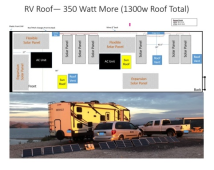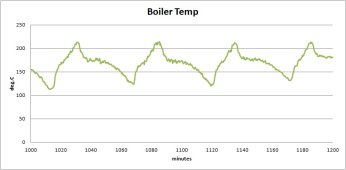Realistically at the equinox March and September when AC is needed in the day, 8-10 hours for a single AC Provided there is not a cloud in the sky. In the longest days of the year probably 14 hours. In the shortest days of the year, may be limited to 4-6 hours.
This Write up gives some stats of running AC.
-Count on an inverter pulling 1700 watts from a battery bank for a 15 k BTU unit.
-My production at equinox was 2100 watts max. My max I produced in a day was 18 kWh, and could have done more, I just did not produce more. I should max out around 20 kWh.
-My production at the shortest day of the year is 1500 watts. The most I produced in a day was 7 kWh, think I could get 10 kWh to 12 kWh.
-I am not sure of production at the longest days of the year. AZ temps are typically 110 F and a single 15 k BTU AC will not cool an RV. Two will, but i don’t have the power.
View attachment 123944
To run the AC on solar, there is 1650 watts of flat panels on the roof with 900 watts on the ground. This is really close to what Will said of filling up your roof and putting just as many on the ground.






